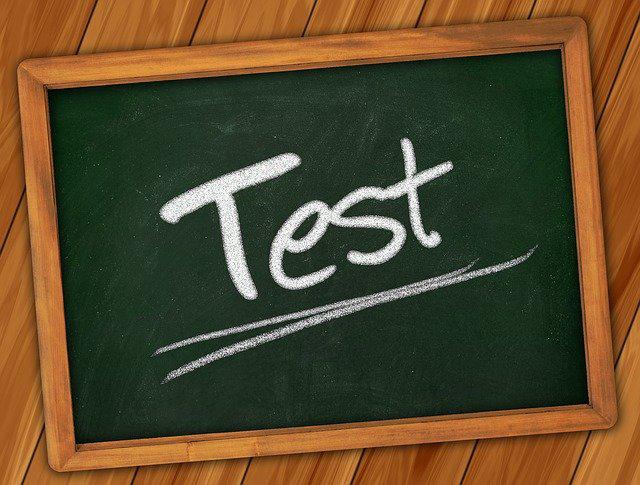
Taking the SAT college-entrance exam can be a daunting task. Along with managing life,
work, and school, test-takers must find time to study for the test. But perhaps even more difficult, SAT-takers must become familiar with the test and learn to effectively prepare for it. This is where strategy comes in and determining one’s strengths and weaknesses.
Knowing where you are competent along with areas of enhancement needed to be successful on the SAT will allow you to more effectively use your time and resources. This approach will enable you to better pinpoint what skills and knowledge you need to sharpen. Imagine if taking the SAT was like playing a sport. A tennis player with a strong backhand would still practice that backhand but his or her coach would be wise to have them spend additional time on other, less developed swings. Similarly, a batting coach would focus on the areas that a baseball player needed to improve-maybe raising the elbow, bending the knee to produce better results. Like an athlete training for top performance, you can approach the SAT with a similar mindset using the strategies below.
Strategy #1: Diagnostic/Practice Tests
Virtually every article and blog on preparing for the SAT stresses the importance of taking practice tests. Use practice tests to diagnostically assess your areas of strength and weakness; this is the first step in developing a study plan. Taking a practice test establishes a baseline to work from. Taking practice tests also allows you to familiarize yourself with the content of the SAT, so there are fewer surprises. Another tip is to take these practice tests under actual testing conditions (no technology, timed, etc.).
Crimsoneducation.orgclaims that test-takers struggling with the SAT fail to take the initial step of completing diagnostic testing, agreeing that practice tests establish the foundation for preparation. Test score data from the diagnostic test will then enable you to streamline studying, thus improving efficiency and performance. A google search will locate practice tests resources.
Here’s a free practice test from the College Board to get you started. If you are currently attending high school, seriously consider taking the PSAT as a Diagnostic test for all the reasons mentioned above. Berlinsky-Schine (2018) notes that the PSAT can tell you whereto focus your efforts. Not only can you view overall scores, but also see sub-scores for individual skills (e.g. command of evidence, expression of ideas, heart of algebra).
Strategy #2: Considering Getting a Coach (Tutor)
The second part of working with strengths and weaknesses when preparing for the SAT involves getting help. This generally can be in the form of a tutor, who can assist you with diagnostic assessment, developing a study plan, and compensating and improving in areas where you need work.
Tutoring enables you to get direct feedback and personalize lessons. For example, you might master an area in the Math section but need more work the English section, then the tutor can help design a customized plan. Schine (2018) also believes tutors can help spot weaker areas since they have experience with the test. Tutors can also suggest resources and study materials. Another strategy to gain outside perspective on areas you need to improve is to join SAT study groups and collaborate with friends and classmates who are also preparing for the exam.
Strategy #3: Developing A Detailed Game Plan
Once you’ve gathered data on yourself and the SAT and collaborated, it’s time to develop a detailed study plan. This plan should include practice test scores, skills to work on, knowledge to be learned, time spent studying different sections, and other pertinent information. When preparing for the test, Wood (2016) said she analyzed every question on practice tests she completed, categorizing “missed questions” by the concept.
This approach helped her evaluate her own abilities and provided new knowledge about the SAT. Wood diagrammed results from about eight practice tests to provide a visual for her performance. This helped her see exactly what sections and questions needed more work. Wood created a spreadsheet for herself to track questions she got wrong, which helped her create a personalized study program that addressed her weaknesses.
The degree of detail within your plan is up to you, but the practice of mapping out questions and areas that need strengthening can then guide you on how to spend time studying and what resources to utilize. You might consider investing more time in a particular section of the exam if you struggle in that area.
In the end, the SAT is a major commitment of time, energy, and resources. You must work smarter by diagnostically assessing your current skills and knowledge and use that information to develop a detailed plan that will help make your study time more efficient and effective. You’re only as good as your game plan!
Bio
Steve Haberlin is a PhD candidate and graduate assistant at the University of South Florida in Tampa, Florida. A former education news reporter for the Ocala Star-Banner and k-12 teacher, Steve currently supervises pre-service teachers and teaches undergraduate courses in the College of Education. He has published articles in a number of peer-reviewed journals, including Action in Teacher Education, the Qualitative Report, and Gifted Education International. He is a regular blogger for Education World, as well as a freelance writer for other organizations like Patrick Henry College.